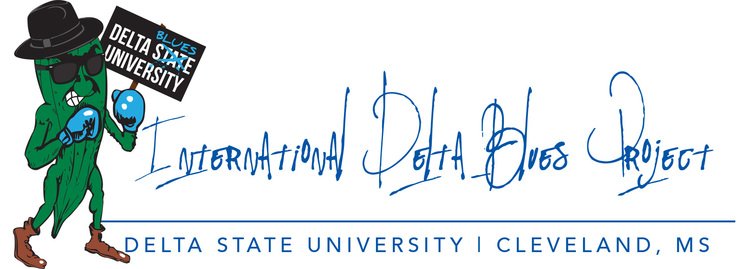Information For Participants
Mississippi Delta: The Place-The Mindset
by Luther Brown, founding director of The Delta Center
“The Mississippi Delta begins in the lobby of the Peabody Hotel in Memphis and ends on Catfish Row in Vicksburg” according to David Cohn1. Marlo Kirkpatrick says that while “Cohn may be geographically accurate,” he was incomplete. “The Delta is not just a place, but a mindset.”2
The Mississippi Delta is a mindset. It has a mystique of mythological proportions, or as Rheta Grimsley Johnson said, it is the “South of fiction and fantasy.”3 But this fantasy has grown out of the reality of American history. The Delta is a land that was virgin wilderness and swamp at the turn of the twentieth century, cleared for cotton and plantation life through the 1930’s, dominated by politically powerful gentleman planters, peopled by Black sharecroppers, Italian immigrants, Chinese, Lebanese and Jewish merchants. It is the source of “The Great Migration” north, and thus the home of the African American populations of many Northern cities, like Chicago and Detroit. It is also the home of the Blues, Gospel, soul food, the civil rights movement. It was home to Tennessee Williams, Eudora Welty, Richard Wright , Clifton Taulbert, Shelby Foote, and Hodding Carter. It is where Teddy Roosevelt saved the original “Teddy Bear,” and where Elvis Presley learned to dance and sing and drive a pink Cadillac. It is the land where Muddy Waters and Robert Johnson wrote the lyrics that eventually made the Rolling Stones, John Mayall, and Eric Clapton wealthy.
The Delta is also the American story, shrunk in time and space. As Faulkner wrote, it was “deswamped and denuded and derivered in two generations.”4 Shelby Foote claimed that one could see “a hundred years of history in twenty years in the Delta.”5 James Cobb wrote “When it comes to history, the Delta was clearly a region in a hurry.”6
The Delta was built by cotton planters, railroad companies, and New York and European investors, exploiting the labor of tens of thousands of poorly educated but hard working sharecroppers. It provided timber for the north, and went on to produce the cotton that was the most important export of the United States. Its early development generated the class and race distinctions of America today, resulting in a land of “mean poverty and garish opulence.”7Despite these distinctions, Faulkner could still write that it was a region “…where cotton is planted and grows man-tall in the very cracks of the sidewalks, and usury and mortgage and bankruptcy and measureless wealth, Chinese and African and Aryan and Jew all breed and spawn together until no man has time to say which is which and no one cares.”8 It underwent the massive dislocations resulting from the transition from mule- and man- intensive cotton production to tractor and harvester intensive soybean and rice agro-industry, and experienced the upheavals of school integration, economic boycotts, police dog attacks and Freedom summer.
Out of all of this accelerated history grew American popular culture. The Town of Greenville alone claims “more authors per square inch than any other American city,” and the rest of the Delta simply adds to that claim.
The Blues and Gospel may have been born in the Delta, but they spread along with the migrating population as far as Chicago, New York, and Los Angeles, and over the airwaves to London and Tokyo. Jazz, Soul, Bluegrass, and Rock ‘n Roll were all affected by the sounds of the Delta. The great flood of 1927, which displaced or killed thousands, “changed America” by sweeping the previously unknown Herbert Hoover into the Presidency and setting the stage for the Great Depression.9 More recently, the region was the scene of the struggles and triumphs of the civil rights movement, moving from apartheid to integrated community in a single lifetime.
In short, the Mississippi Delta is a mindset, and that mindset is the distillation of American Culture in its purest form. The brew that has fermented in America for hundreds of years is, in the Mississippi Delta, distilled into white lightning in a single century. It is no wonder that Faulkner used the Delta to explore the issues of greed and cruelty, and the assault of modern man on the natural world, or that Tennessee Williams used it to expose the depravity and materialism that can hide behind a mask of wealth, power and class.10
Howard Zinn wrote that the south is the “essence” of American society, and is therefore a mirror “in which the nation can see its blemishes magnified.”11 James Cobb extended the argument to claim that the Delta is the South’s South, “a mirror within a mirror, capturing not just the South’s but the Nation’s most controversial traits in merciless sharp detail.”12 Students of contemporary American culture are very hard pressed to find a better laboratory in which to explore American history and culture.
REFERENCES:
1. David Cohn. 1948. Where I was Born and Raised. Boston.
2. Marlo Carter Kirkpatrick. 1999. Mississippi Off the Beaten Path. Old Saybrook, CT.
3. Rheta Grimsley Johnson. 1990 (July 8). The Delta Remains Home to the Mythical South. Memphis Commercial Appeal.
4. William Faulkner. Go Down Moses. New York, 1973.
5. Richard Tillinghast. 1989. Interview with Shelby Foote. In William C. Carter, ed., Conversations with Shelby Foote. Jackson.
6. James Cobb. 1992. The Most Southern Place on Earth. Oxford University Press, Oxford.
7. Will Campbell. 1992. Providence. Atlanta.
8. William Faulkner. Go Down Moses. New York, 1973.
9. John Barry. 1997. Rising Tide: The Great Mississippi Flood of 1927 and How it Changed America. New York.
10. James Cobb. 1992. The Most Southern Place on Earth. Oxford.
11. Howard Zinn. 1964. The Southern Mystique. New York.
12. James Cobb. 1992. The Most Southern Place on Earth. Oxford.






